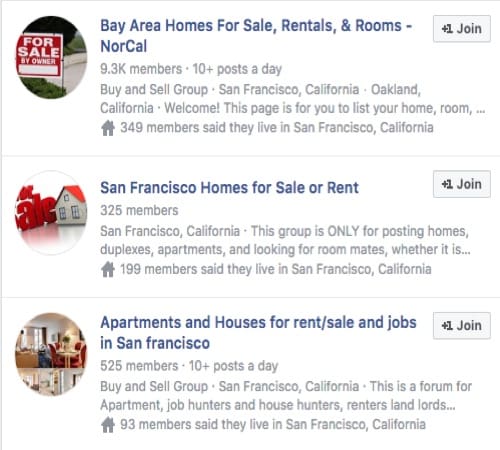Home Selling Tips for the 21st Century You Can Use Right Away
- Published on
-
 Katie Bassett Contributing AuthorClose
Katie Bassett Contributing AuthorClose Katie Bassett Contributing Author
Katie Bassett Contributing AuthorKatie is a San Francisco based journalist and content specialist with over 4 years of experience in real estate and technology. She holds a B.S. in Logistics, Materials, and Supply Chain Management from Arizona State University.
We’ve all heard the recycled staging advice that guarantees a speedy home-selling process. But in today’s market, is that enough?
Buyers are looking for features beyond a cleaned-up living room. In 2017, one third of home builders said they were making a ton of “green” buildings with eco-friendly features. Additionally, agents are now using big data and machine learning to better understand the housing market. In fact, Stanford teaches a class on using machine learning to predict housing prices.
Home technology and eco-friendly interior trends along with data-driven processes are shaping the industry. This makes selling a home even more complex and riskier for a first-timer. How can you identify which trends will stick and find innovative tools that will allow you to make data-driven decisions about the market?
We took a look at the major social trends and paired them with data innovations like big data, machine learning, artificial intelligence, and the internet of things to curate a list of eight cutting-edge home selling tips that will increase your property’s visibility and buyer attraction.
8 Modern Home Selling Tips to Use Today
These 21st-century techniques will help your home sell fast and for the most money.
1. Use big data to price your property
Big data refers to a large volume of data that is too big to keep track of in conventional data methods. New reporting tools can analyze data for insights that allow businesses to make more strategic decisions.
So, why is this important to the real estate industry?
If you misprice your home at the beginning of the selling process, you run the risk of your property sitting on the market longer than it should, becoming stale and overlooked. When this does happen, you’ll be required to drop your listing price or make unnecessary, pricey renovations to improve your home’s value. Neither are favorable for a seller. Luckily, data analysis helps a seller make better-informed pricing decisions based on historical data in a geographical region.
Companies all over the country have been able to create systems that provide more insight to real estate agents, which can help sell your home faster. Bowery, for example, uses their ecosystem of big data and human expertise to help real estate agents better price a property more accurately.
In order to capitalize on this trend, find a real estate agent that uses big data systems or predictive analytics to make better-informed decisions on pricing your property and selling your home.
Ask these 3 data questions to prospective real estate agents:
1. What is the process of pricing a home before putting it on the market?
Ideally you’re looking for a real estate agent who uses historical pricing trends in your neighborhood and current competition to price your home.
2. What tools do you use to evaluate historical home pricing trends in the area?
Make sure your real estate agent is crunching data numbers and not evaluating the price of a home based on instinct. Ask about specific analytical tools to help him or her perform a trend analysis.
3. Where do you find historical housing data?
Agents can pull historical information from a variety of resources. Whether it be with their local MLS or a partner real estate website, be sure they have the resources needed to perform a pricing analysis
2. Optimize your online real estate listing
According to NAR, over 44% of home buyers say they take the first steps of their home search online. On top of that, over 83% of house hunters say they use the internet frequently when buying a home. The internet has become a powerful tool in the real estate market. Buyers can search for a home online without any limitations and they have 24/7 access to real estate listings all over the country.
As a home seller, it’s important to take advantage of online listings and look for ways to maximize your listing’s visibility. Include your property on the most visited real estate websites to gain online exposure. Zillow, for example, received 36 million visits in 2017, indicating a major opportunity to increase the number of eyes on your property.
In your online listing, create content that is both optimized for the real estate website and appealing to the buyer.
Include these 10 listing features to grab buyer attention:
1. Listing price
-
- When a buyer searches for a home based on a monetary budget, your home will be included in the results.
2. Location of your home.
-
- Buyers will create advanced searches to look for homes with city or coastal views or sit on a specific type of street, whether that be a cul de sac or dead end street.
3. Proximity to commercial buildings/public transportation.
-
- Buyers make purchasing decisions based on a home’s proximity to their office.
4. Exterior style description.
-
- Buyers might search for specific exterior features including the style of the roof, style of home (A-frame, cottage, contemporary, etc) and, the building material (brick, wood, cement siding, vinyl siding)
5. Outdoor area description.
-
- Create a detailed explanation of to include some of the following applicable features: pool, spa, sauna, steam room, fire-pit, courtyard, patio, or deck.
6. Neighborhood amenities.
-
- Buyers want to know about amenities or other neighborhood perks exclusive to an area. If applicable, include information on the neighborhood’s clubhouse, availability of a public pool or gym, accessibility to a greenbelt or running path, and proximity to a playground or park.
7. Neighborhood school zone.
-
- Families are concerned with school zones and often use an advanced search to find homes in specific school zone areas.
8. Neighborhood security.
-
- Gated communities or dedicated patrol cars are major security perks buyers tend to search for.
9. Interior amenities.
-
- Include some of the following interior home features that interest buyers: number and type of bedrooms, number of bathrooms, living room, kitchen, home theatre or other bonus rooms, number of levels, and garage structure.
10. Brand name appliances installed in your home.
- State-of-the-art kitchen equipment or advanced laundry systems entice buyers who are trying to avoid remodeling.
3. Show up in the home buying mobile apps
The rise of mobile applications has transformed our daily lives by shaping the way we work, spend leisure time, and search for information. In 2014, global usage of mobile devices surpassed desktop usage and it has continued to be preferred channel to consume information. With over 2.2 million mobile apps to choose from, users stay glued to their phones, causing consumption to drastically increase.
The real estate industry has capitalized on this trend and created a mobile marketplace where buyers can easily search for homes by using real estate apps. And their marketing efforts are proving to be successful. 68% of new home shoppers use real estate mobile applications throughout the entire house hunting process.
It’s not enough to show up on the big real estate websites. These days, you need to think mobile first. In the Apple App Store, the top six real estate apps listed for buyers include:
List your properties here to ensure the high visibility and talk with your real estate agent to for additional insight on city-specific mobile applications that you should be listed on.
4. Take advantage of free advertising on Facebook
There are 2.46 billion users on social networks, which is over 30% of the world’s population. Because of this expansive reach, social media has turned into a robust marketing tool where businesses use social networking to build brand recognition and loyalty.
Successful social media marketing campaigns can be tricky in any industry, especially with real estate. But when you get it right, campaigns can be extremely effective inbound marketing initiatives.
Facebook, in particular, is a great resource you should be using when selling a home. While there are paid advertising options you can opt for on Facebook, start off by taking advantage of the different real estate groups and local home gorups as a way to advertise your home.
Here is a step-by-step example that can help you find a local group you can utilize:
Start off by signing into your Facebook account.

In the search bar type in a query that includes your local city. For this example, we looked for homes in San Francisco. After you hit enter, you’ll want to click on the “Groups” tab located directly under the search bar.

A list of groups related to your search query will populate. From here, you can ask to join the groups that sound most appealing. You ideally want to seek out membership to groups with the most members for maximum visibility.
Once you’ve been accepted, you can list you start a discussion with members, post your listing, or create a video that other members can engage with.
When listing a home on a Facebook Group page, be sure to include professional pictures, videography, a description of the home, and contact information. You can use that same post and reach out to real estate groups on Facebook to expand your presence.
5. Offer virtual tours
Virtual reality is a simulation that makes it possible for a user to experience anything at any given time. Typically we hear the term virtual reality and think about VR headsets or even the popular series Westworld. But there has been major strides with virtual reality in the real estate space.
Open house visits and daily showings are a common way to explore a property, but timing can be a major constraint that bogs down the home selling process. By using virtual reality systems, you can create a guided virtual showing, shot in 360 degrees.
Create your own virtual tour by doing the following:
- Plan your tour by walking through the property and testing different angles in each room
- Film each interior room, capturing footage slow and steadily, so buyers get a clear sense of various rooms
- Launch a video application like iMovie to sync your footage and create a cohesive story of your home.
Charlotte Ferguson, a real estate agent who ranks in the top 1% of agents in the Atlanta metropolitan, suggests to “hire a professional photographer to create virtual tours that you can put on your listing as well as social media.” This way, buyers from all of the country have 24/7 access to your home.
Aside from video tours that can be posted with a property listing, you can also utilize live video platforms when selling your home. Agents are starting to use tools like Facebook Live, Periscope, and Snapchat to showcase homes on the market and provide a preliminary introduction of a home to a prospective buyer.
6. Switch regular lightbulbs with smart ones
More homeowners are making room for an additional resident in their house commonly referred to as Alexa, Siri, or Google Home. These virtual assistants are prime examples of smart home technology and have allowed homeowners to centralize and automate home tasks. Popular functions include managing security, entertainment, and lighting.
The lighting in a home is a major selling factor since it sets the tone for a buyer immediately after entering.
If your space is feeling a little lackluster prior to listing your property, think about investing in these high-tech lighting accessories that can light up any room and impress buyers walking through your doors.
- Add home dimmers to your ceiling lighting. You can easily change the mood and set the ambiance in a matter of moments
- Purchase ecosmart lighting like CFLs or LEDs for energy efficiency. CNET recently rated the top LED bulbs to invest in that can lower costs while making colors in the home pop.
- Install underfloor lighting that can be powered by a virtual assistant like Alexa. This can brighten the aesthetic of a room and also allow new home owners to have better visibility of the floor late at night.
7. Promote your home’s sustainability
Pollution and climate change have been grabbing everyone’s attention, and for good reason. In 2012, the World Health Organization estimated that seven million premature deaths were linked to air pollution due to an increase in emission and rise of global temperatures. As the world’s air quality continues to disintegrate people have started to look for ways to control and better the environment.
In attempts to solve the problem, communities all over the world are beginning to pitch in. The Paris Climate Change Agreement, for example, has been signed by 175 countries and aims keep a global temperature rise this century below two degrees Celsius above pre-industrial levels as well as limit the temperature increase even further to 1.5 degrees Celsius.
These same principles are beginning to pick up in the real estate industry, making it important to stay ahead of this growing trend. Buyers are enticed with homes designed to reduce the overall environmental footprint. In fact, it was found that 89% of buyers say that energy efficient homes are more attractive to rent or buy.
So what can a seller do?
When you’re assessing home improvements, here are a few renovation ideas that can make your house become more sustainable and appealing to a buyer:
- Install solar panels that are designed to absorb the sun’s rays and use this as an energy source for electricity.
- Invest in xeriscape, a drought tolerant species you can plant in your yard to minimize watering.
- Purchase rainwater tanks that capture rainwater on your roof. Homeowners can store and use this water the home or garden.
- Put in glazed windows, which better insulate a home and keep heat from escaping.
8. Research and hire a top real estate agent online
Before the technology boom, sellers had limited access to real estate agents and were only able to use referrals from friends and family members. Uninspiring options created underwhelming performance that often left sellers unsatisfied with their entire experience.
The digital age has created a limitless database where sellers can access real estate agents from all over the world. But now sellers are experiencing the opposite problem; it’s hard to hide from the explosion of real estate advertisements, agent profiles, and all the email spam about new homes that you can’t seem to unsubscribe to.
How can you sift through the marketing noise and find a real estate agent that fits your needs? Use objective performance data to cull that lengthy prospect list down to 3 – 5 top agents in your area suited to your needs. Read about their track records and get insight on personal reviews, so you’re able to make a better informed decision about your real estate agent.
Article Image Source: (Pixel-Shot/ Shutterstock)
